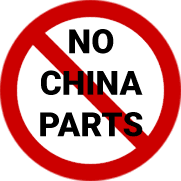The Five Major Components of an Aircraft
Since the advent of aviation, we as humans have radically changed our ability to traverse long distances and reach new heights. Since the first Wright brother’s airplane, a great number of aircraft types and models have come about, many serving applications such as civil transportation, executive travel, military defense, exploration, and more. Although aircraft may differ in design to accommodate specific uses, most contain the same standard set of components that work together to achieve and sustain heavier-than-air flight.
Wings
The wings of the aircraft are what help the vehicle achieve flight, and they are fins that utilize streamlined cross sections in order to act as airfoils. By manipulating aerodynamic forces, lift is generated under the wings, and this is what drives the aircraft upwards into the sky and sustains flight. Depending on the aircraft, various sizes, shapes, and designs may be implemented, and each can adjust the capabilities and characteristics of flight.
In general, wings are placed on the fuselage on either the top, middle, or lower part of the fuselage, and there may be more than one set of wings depending on the aircraft. With high-winged aircraft, external braces may be placed between wing sets in order to accommodate for transmitting loads that the aircraft are subject to. For more aerodynamic control, aircraft wings may utilize flaps which increase lift and allow for easier takeoffs and landing. Generally, the main types of flaps include the plain, split, slotted, fowler, and slotted fowler flap.
Empennage
The empennage of the aircraft is the section in which the tail and many fixed flight surfaces are located. With a rudder attached to the back of the tail’s vertical stabilizer, pilots can control the yaw of the aircraft. An elevator is also attached to the horizontal stabilizer of the aircraft, and it allows for the pitch to be manipulated. With trim tabs, the pressure exerted on controls are reduced, allowing for easier transitioning for movement. From the flight deck, all control surfaces on the empennage may be governed by pilots.
For some aircraft types, an elevator may not be present on the empennage. In such cases, a one-piece horizontal stabilizer is featured and is connected to a hinge, allowing for it to pivot up and down as needed. As such, the same results as provided by the elevator can be achieved as the trailing edge of the component moves up and down to adjust the direction of the aircraft nose.
Landing Gear
With the landing gear of an aircraft, pilots can successfully takeoff and land with ease. Furthermore, landing gear components also often include wheels, brakes, and other components that facilitate parking and taxiing. While wheels serve as the most common type for landing gear, amphibious aircraft or those that operate in snowy conditions may utilize floats or skis. Depending on the aircraft’s shape, size, and weight, a variety of landing gear and wheel configurations can be made to ensure optimal weight distribution and shock absorption upon landing.
Powerplant
Although the fuselage may be robust and the wings can provide lift, aircraft are fairly inoperable without a powerplant. Including the engine and the propeller, the powerplant is implemented on an aircraft in order to produce thrust. Depending on the type of aircraft and its needs, turboprops, turbojets, ramjets, and other types of engines may be used. In addition to propulsion generation, powerplants are also what may generate electrical power for electronic systems, produce heating for pilots and passengers, and may act as a vacuum source for specific flight instruments. Due to their immense importance for flight operations, the powerplant should be inspected and maintained often to ensure longevity of the system.
When procuring parts and components for the fuselage, wings, empennage, landing gear, powerplant, or other sections of the aircraft, ensuring that you have the most reliable items is crucial for efficient and steadfast operation. At ASAP Parts 360, we can help you secure the new, used, and obsolete components that you need, complete with competitive pricing and rapid lead-times for your benefit. Get started with a personalized quote today when you fill out and submit an Instant RFQ form as provided through our website.


